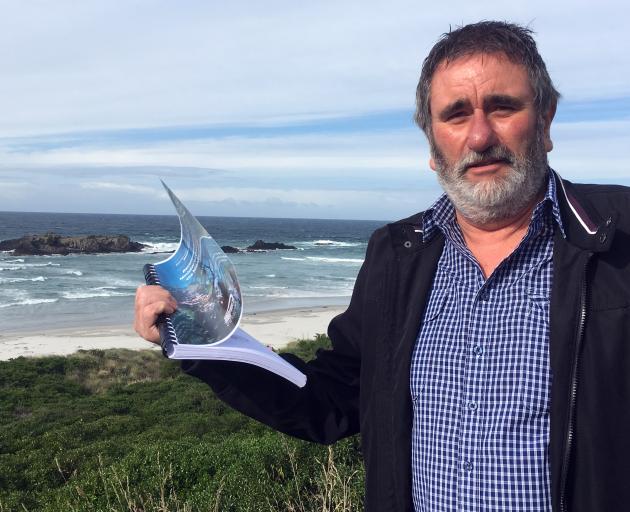
Government ministers are considering two alternative networks of marine protected areas along the southeast coast of the South Island. Reporter Shawn McAvinue talks to a recreational fisherman and a conservationist about the option that includes three marine reserves near Dunedin.
A Dunedin recreational fisherman and a conservationist have opposing views over plans for protected marine areas on the South Island’s lower east coast.
Two alternative networks of protected marine areas covering the coastline from Timaru, in South Canterbury, to Waipapa Point, in Southland, have been released by the Government.
Network 1 includes six marine reserves (no-take areas).
The three reserves closest to Dunedin in network 1 are:
★ A 28.7sq km reserve off the south coast of Otago Peninsula, from Harakeke Point to White Island, with 19.5km of coastline including many Dunedin city beaches.
★ A 5sq km reserve surrounding Green Island, including 0.7km of coastline.
★ A 173.2sq km reserve in Papanui Canyon.

Tautuku Fishing Club president Brett Bensemann, of Dunedin, said the club supported one marine reserve being created near Dunedin — the proposed reserve in Papanui Canyon.
However, the club wanted the canyon reserve to be 106.3sq km, as in network 2, rather than the 173.2sq km in network 1.
The club was ‘‘dead against’’ reserves from Harakeke Point to White Island and surrounding Green Island.
A reserve covering from Harakeke Point to White Island included coastline such as Tomahawk Beach, where many families launched boats, he said.
If families were forced to fish beyond the reserve, it would put them at the mercy of the sea conditions, which could change quickly, he said.
‘‘It’s an issue of safety . . . There’s a huge danger if all this area is closed and you have to go out further to get a feed.’’
Forest & Bird OtagoSouthland regional manager Sue Maturin, of Dunedin, said if the ministers adopted network 1 and its series of marine reserves ‘‘it would be a great step forward’’.
However, some of the reserves could be ‘‘a bit bigger and bit better designed’’.
She wanted the proposed reserve to extend out in Sandfly Bay to include Tow Rock.
By excluding Tow Rock, the reserve would cut across a reef, leaving it accessible to fishers and reducing the ‘‘effectiveness’’ of the reserve.
She disagreed with Mr Bensemann that a coastal marine reserve would put fishers’ lives at risk.
‘‘Today’s weather forecasting is so accurate most people know if the weather is going to change or not . . .I’m a kayaker, diver and snorkeller and I’m used to knowing when is a good day to go out, and when is not,’’ Ms Maturin said.
A marine reserve should be accessible, she said.
‘‘Why should people who want to enjoy a marine reserve always be pushed offshore?’’
Any recommendations accepted by the Government would go out for further consultation and public input before implementation.












